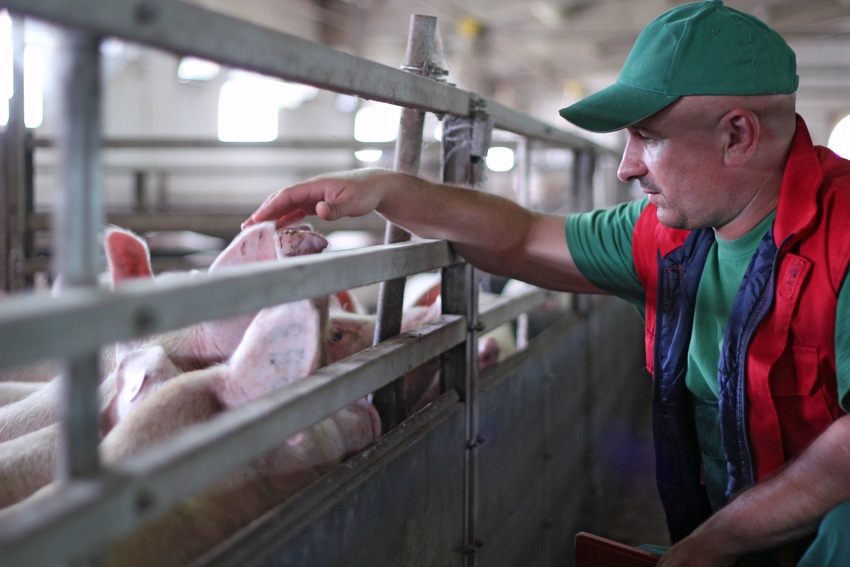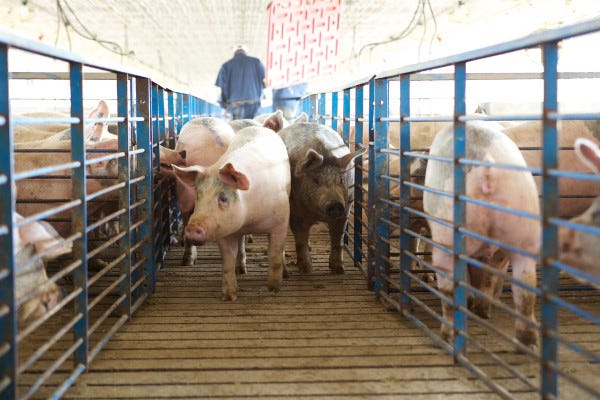The ’90s were a decade marked by lower carcass weights, higher fat content and less uniformity between cuts. How did we come so far, so fast?
August 31, 2017

Sponsored Content
The ‘90s were an era of change in the pork industry. Consumers demanded leaner cuts of meat, which compelled the industry to change the way they raised and processed pigs. This created a push for leaner, heavier animals that led to substantial advancements in genetics, nutrition and production methods.
Swine industry consolidation also sped up in the 1990s. Though the number of operations shrank, the survivors became larger and more sophisticated, setting the foundation for vertical integration. Processors continued to push for uniform size to make processing “case-ready products” more efficient. These and other changes drove the demand for consistency in terms of weight, size and quality.
Moving into the 2000's the industry brought forth an increased focus on efficiency that saw producers continuously striving to improve management techniques, nutrition and facilities:
-Specialization was becoming the norm, with dedicated nurseries and grow-finish buildings
-Management was moving toward the all-in, all-out approach
-New facilities were helping to minimize stress and ease loading
-Industry education and knowledge were also rapidly improving

Coinciding with the increased focus on efficiency was the introduction of Paylean to the US pork industry in December 1999. Producers who were accustomed to seeing feed efficiency suffer as pigs approached market weight, saw Paylean hold the promise of improving feed efficiency and carcass weight without having a detrimental effect on lean-to-fat ratio.
Suddenly, producers could add pounds to a pig without making any other substantial changes, and by combining Paylean with other technologies, like improved genetics, nutrition and equipment, even more pounds could be added without altering the composition of the meat. The result was a phenomenal amount of additional food being produced with the same resources in the same amount of time — roughly 180 days.
By improving feed efficiency, Paylean helps producers and packers remain profitable — they get more meat from each animal, and more meat from fewer inputs (feed and water). This is critical in times of costly feed ingredients but also important from a sustainability standpoint.
For many who have worked in the pork industry for decades, the benefits of Paylean are easy to recognize. This is a proven technology that enables producers to improve feed efficiency, gain and carcass leanness, resulting in increased yields and more affordable pork for consumers. For producers, packers and consumers, it’s a win-win-win.
Today, while so much in the industry has changed over the years, Paylean from Elanco not only continues to be a proven solution, but comes backed by a team dedicated to helping you determine and implement the optimal Paylean program for your operation. Learn more at Paylean.com.
This article was adapted from the “Understanding the Contribution of Paylean to the U.S. Pork Industry: From the Perspectives of Dr. Gary Allee and Dr. Floyd McKeith” paper. To gain aperspective of Paylean’s impact, Dr. Allee and Dr. McKeith compared and contrasted industry conditions before and after the product’s introduction. The views expressed in this article are solely those of the authors.
The label contains complete use information, including cautions and warnings. Always read, understand and follow the label and use directions.
Indication: For increased rate of weight gain, improved feed efficiency and increased carcass leanness:
Feed at 4.5 to 9 g/ton to finishing swine in a complete ration containing at least 16% crude protein, for the last 45 to 90 lbs. of gain (group average).
Clinical registration studies showed no statistical difference between the effects of 4.5 and 9 g/ton.
CAUTION: Ractopamine may increase the number of injured and/or fatigued pigs during marketing. Not for use in breeding swine. No withdrawal required when fed according to label directions.
Paylean, Elanco, and the diagonal bar logo are trademarks of Eli Lilly and Company or its affiliates. © 2017 Eli Lilly and company or its affiliates.
paylea 5678-5 | USSBUPAY00105
About the Author(s)
You May Also Like



